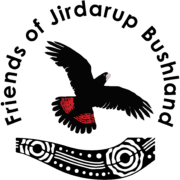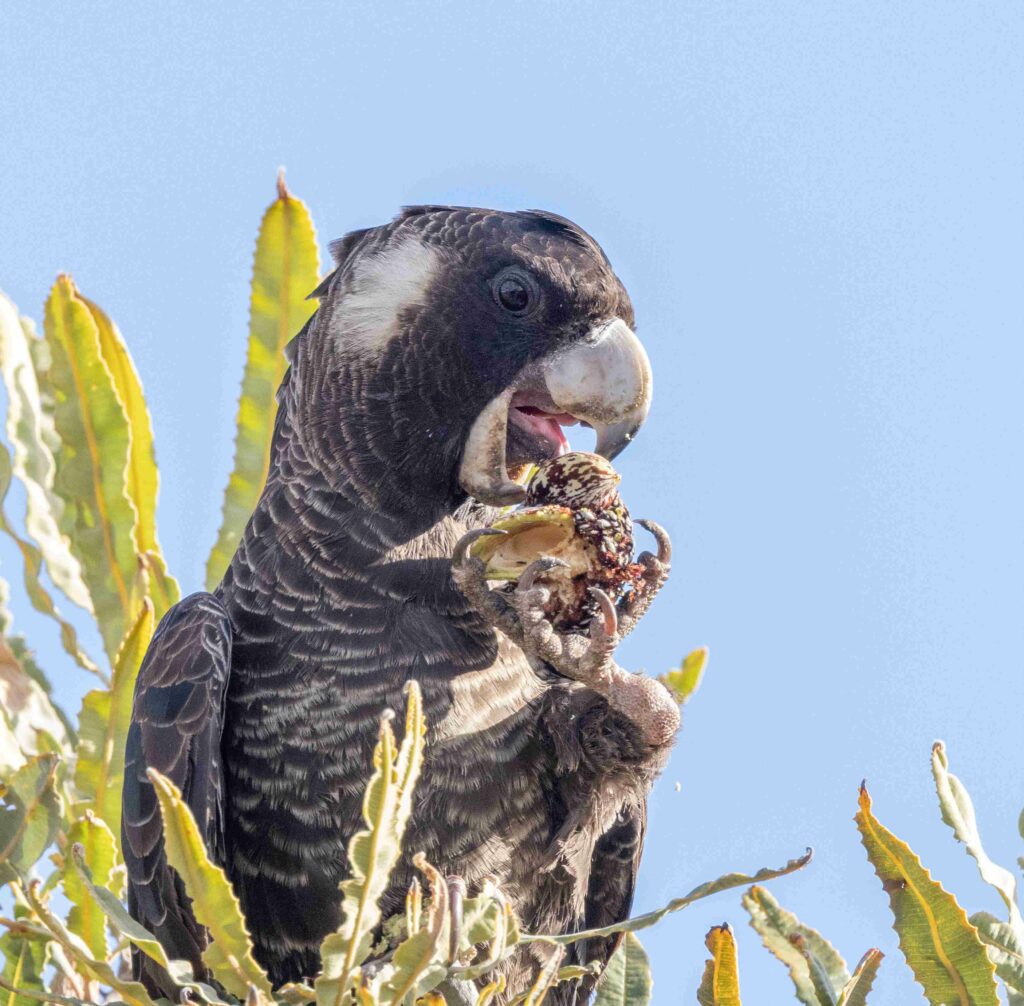Carnaby’s Black-Cockatoo
Zanda latirostris
Noongar Whadjuk: ngoolyak
Carnaby’s are a favourite for local nature photographers. Photo by Georgina Wilson.
Also known as Carnaby’s White-tailed Black-Cockatoo, Carnaby’s are large black cockatoos with white cheek patches and white tail feather panels. The beak is black in males, and grey in females. The male also has a red ring around the eye which is absent in females.
A very similar cockatoo, Baudin’s Black Cockatoo (Zanda baudinii) has not been recorded in Jirdarup. It is known mainly in the Darling Ranges and not common in the Perth area. The two cockatoos differ in beak size, due to differing techniques for extracting seeds from the nuts of marri trees (Corymbia callophylla). The beaks of Carnaby’s are shorter and fatter compared to the Baudin which is thinner and with a larger tip.
Carnaby’s Black Cockatoos are listed as Endangered under the Australian Government Environment Protection and Biodiversity Conservation Act 1999 (EPBC Act) and the State Biodiversity Conservation Act 2016 (BC Act).
Noongar people call Carnaby’s the rain bird – they become unsettled and fly around in large groups prior to rain.
The voice is a more melodious wee-la than the Forest Red-Tailed Black–Cockatoo. Listen to it here.
(Sound with permission from graemechapman.com.au )



